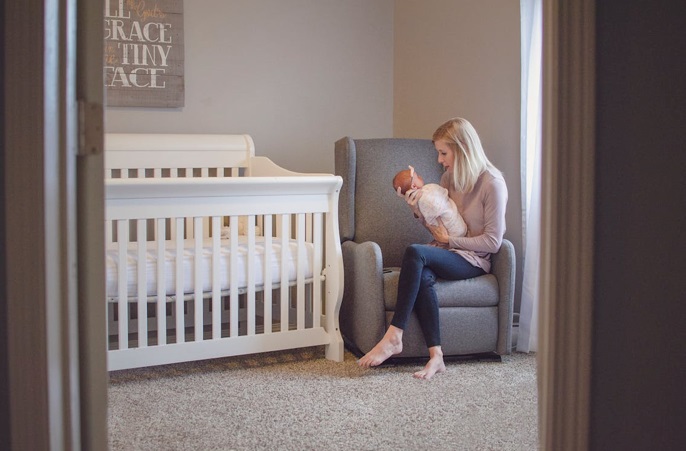
If you’re expecting a new addition to your family, you might be thinking about how to create a cozy space for your little one. One practical solution is to convert your home office into a nursery in your Billings, MT, home. This transition might seem overwhelming at first, but with a clear plan and a few thoughtful steps, you can turn your workspace into a warm, inviting nursery for your baby. Here’s a guide to help you through the process.
1. Clear Out Your Office
The first step in transforming your home office into a nursery is to clear out the room entirely. This may feel like a daunting task, especially if you’ve accumulated a lot of items over the years. Start by sorting through your office supplies, books, and furniture. Decide what you need to keep, what can be donated, and what should be discarded. Clearing out the space will help you visualize the room’s potential as a nursery. It also gives you a blank canvas to work with, making the planning and decorating process much easier.
As you sort through your items, it’s helpful to create three distinct piles: one for items to keep, one for items to donate or sell, and one for items to throw away. This method will streamline the decluttering process and ensure that you only keep what is necessary.
2. Move This Stuff into Storage
If you find that you have many items you need to keep but no longer have space for in your home, consider renting a unit at a local Billings MT self storage company.
Storing your office items off-site can also provide peace of mind, knowing that they are protected and accessible when needed. When choosing a storage unit, look for one that is climate-controlled to protect sensitive items from extreme temperatures and humidity. Additionally, make sure the facility has good security measures in place, such as surveillance cameras and secure access points.
3. Plan the Layout
With the room cleared out and your office items safely stored, it’s time to plan the layout of your nursery. Think about the essential pieces of furniture you’ll need, such as a crib, changing table, and a dresser or storage unit. Consider the room’s dimensions and how you can best utilize the space. It’s important to create a functional layout that allows for easy movement and access to all necessary items.
Start by deciding where the crib will go, as it will likely be the focal point of the room. Place it away from windows and direct sunlight to create a comfortable sleeping environment for your baby. Next, determine the best spot for the changing table, ensuring it is easily accessible and has enough space for diapering supplies. Lastly, think about where to place storage solutions like shelves, bins, and baskets to keep the room organized and clutter-free.
4. Choose a Theme
Choosing a theme or color scheme for your nursery can make the decorating process more enjoyable and cohesive. A theme can be as simple as a favorite color palette or as detailed as a specific motif, like animals, stars, or a woodland adventure. Think about what makes you happy and what you envision for your baby’s space. A well-chosen theme can tie the room together and make it feel more personalized and inviting.
When selecting colors, consider soft, calming tones that promote relaxation and sleep. Light blues, pinks, and neutrals are popular choices for nurseries because they create a serene atmosphere. If you prefer a more vibrant look, incorporate pops of color through accessories like pillows, rugs, and wall art. Remember to choose non-toxic, baby-safe paint for the walls to ensure a healthy environment for your little one.
5. Install Safety Features
Safety is paramount when preparing a nursery. Begin by securing heavy furniture to the walls to prevent tipping. Use furniture anchors or brackets to secure items like dressers, bookshelves, and changing tables. This simple step can prevent accidents and ensure your baby’s safety as they begin to explore their environment.
Cover electrical outlets with safety plugs or outlet covers to protect your child from electrical hazards. Choose cordless window treatments or ensure that cords are well out of reach to avoid strangulation risks. Additionally, make sure any décor or wall hangings are securely fastened and cannot be easily pulled down.
Consider installing a baby monitor to keep an eye on your baby while they sleep. Modern monitors offer a variety of features, including video, audio, and even movement detection. Choose one that fits your needs and provides peace of mind.
6. Select Furniture
Choosing the right furniture is essential for creating a functional and comfortable nursery. Start with the basics: a crib, changing table, and a comfortable chair for feeding and bonding with your baby. When selecting a crib, look for one that meets current safety standards and can convert into a toddler bed as your child grows. This will save you money and effort in the long run.
A changing table with ample storage space for diapers, wipes, and other essentials is a must-have. Consider a dresser that can double as a changing table by adding a changing pad on top. This multi-functional approach maximizes space and keeps the room organized.
A comfortable chair or glider is essential for feeding and soothing your baby. Choose one that provides good back support and has a gentle rocking motion to help lull your baby to sleep. Adding a small side table nearby can be convenient for holding bottles, books, or other necessities.
7. Make it Comfortable
Invest in cozy textiles, such as soft blankets, plush rugs, and breathable crib bedding, to make the nursery feel warm and inviting. Choose materials that are gentle on your baby’s skin and easy to clean. Adding a comfortable chair or glider for feeding and bonding times is also crucial. Look for one with good support and a smooth rocking motion.
Consider using a white noise machine or a gentle lullaby player to help soothe your baby to sleep. These can create a comforting sound environment that mimics the womb and helps drown out household noises. Blackout curtains can also be helpful for creating a dark, sleep-friendly space during nap times.
Conclusion
Transforming your home office into a nursery in Billings, MT, is a rewarding project that prepares you for your new arrival. By following these steps, you can create a beautiful, functional space that will grow with your baby. Clearing out your office, utilizing self-storage, planning the layout, choosing a theme, and painting the walls are just the beginning. Installing safety features, selecting the right furniture, adding storage solutions, personalizing the space, and incorporating comfort are all crucial elements in creating a nursery that is both practical and cozy. With careful planning and a little creativity, you can turn your workspace into a nurturing environment for your child.













